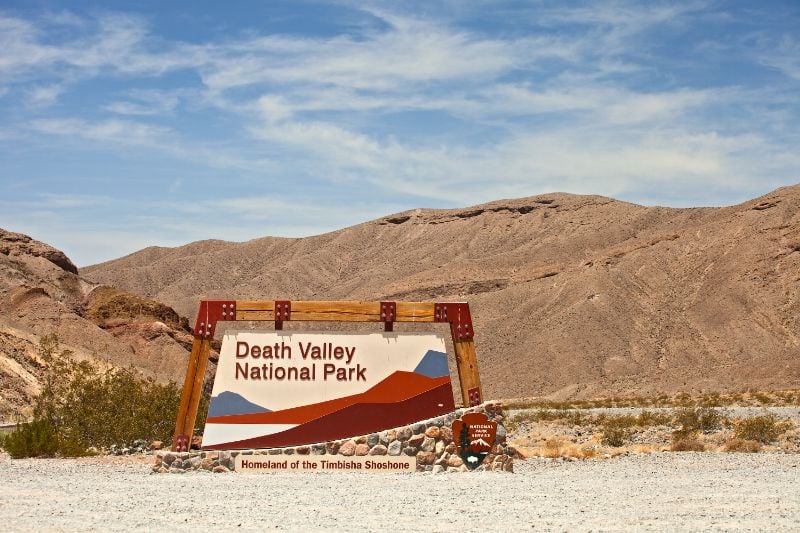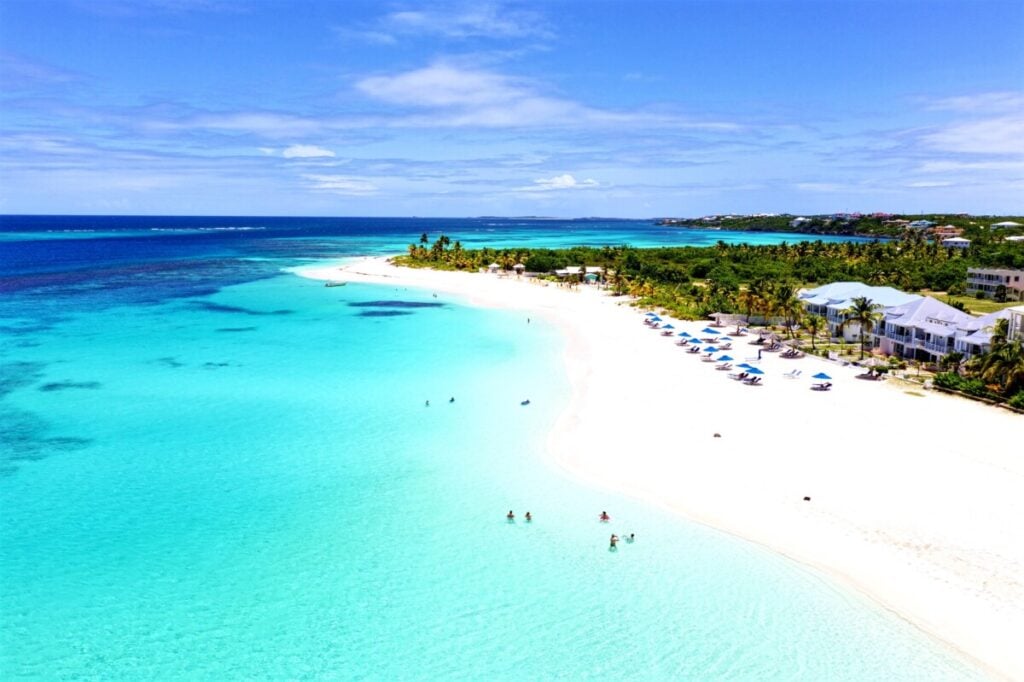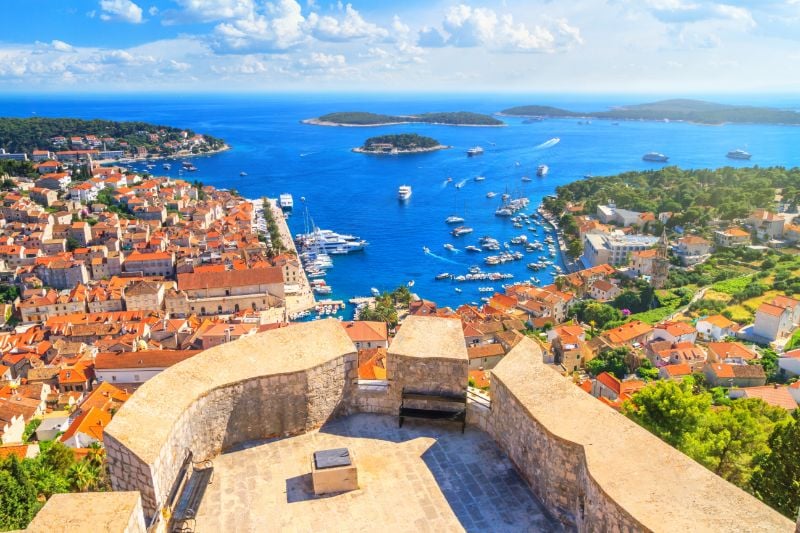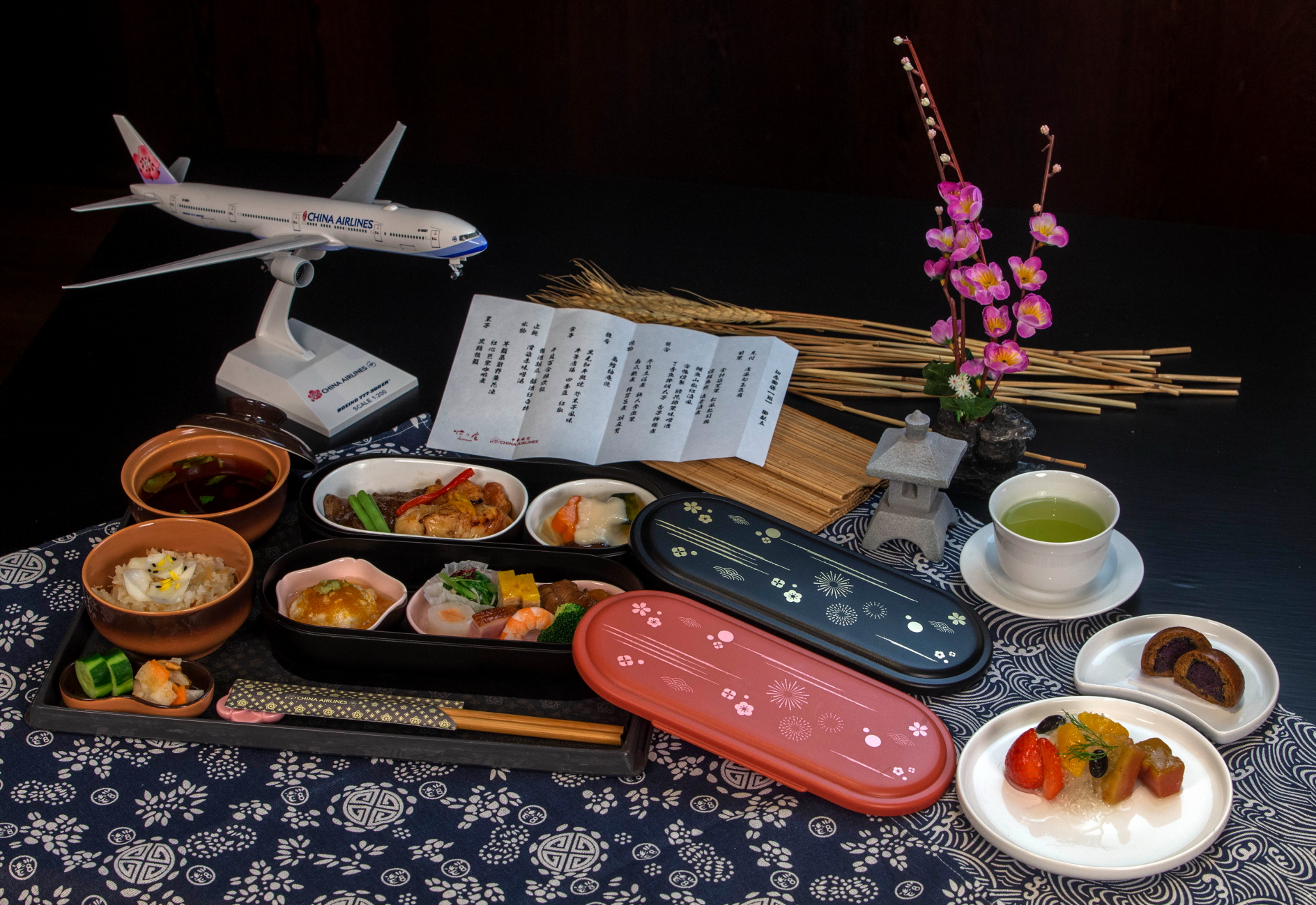Death Valley National Park is one of the largest national parks in the United States and is magnificent as it is treacherous. Death Valley is a land of extremes, boasting the hottest temperature ever recorded on earth: 134 degrees Fahrenheit. Locals measured the scorching temperature in 1913.
Death Valley is also home to the lowest elevation on the continent: 282 feet below sea level, which occurs at the park’s famous Badwater Basin. The extremes don’t stop there, however. Death Valley also gets less rain than anywhere else on the continent with less than two inches per year.
Despite its extremes, Death Valley National Park is a place for incredible adventures. Many of the activities you’ll experience in the park are guaranteed to show you some of the most amazing scenic vistas anywhere on the planet. Incredibly, Death Valley National Park covers millions of square miles but has just 300 permanent residents.
With such grand opportunities available throughout the park, it’s one of the best places to refresh your mind and renew your senses. You’ll find the park is an ideal road trip from nearby cities like Las Vegas and the metropolis of Los Angeles. Now, let’s learn about the best things to explore in Death Valley and where to stay during your trip.
TL;DR
Best Areas to Stay in Death Valley
- Best area for first-timers/tourists – Stovepipe Wells
- Best area for budget travelers – Olancha
- Best area for luxury travelers – Furnace Creek
- Best area for safety – Beatty
- Best area for families – Lone Pine
Where to Stay in Death Valley
1. Stovepipe Wells: Best Area for First-Timers

Stovepipe Wells is more of a way-station than a town and is just one of a few places to rest and refresh yourself on your journey through Death Valley National Park. If you’re looking for where to stay in Death Valley, Stovepipe Wells will give you easy access to a variety of scenic vistas, hikes, and other activities in central Death Valley. The small area even features an outdoor swimming pool with a view at its small hotel.
Stovepipe Wells was named because it was the only place in Death Valley where early settlers could find water. Today, it offers travelers one of only a few gas stations in the park, but its hotel offers spacious rooms.
Things to do in Stovepipe Wells
Virtually every trip to Death Valley will feature a handful of hikes, and you can begin your journey with a hike on the Mosaic Canyon Trail. The trailhead is south of Stovepipe Wells and is an out-and-back trail of four miles round trip. If you want to see where the canyon gets very narrow and interesting, you only have to hike about halfway.
If you have room in your car on your Death Valley road trip, pack a flat board of some sort so you can slide down the hills of the Mesquite Flat Sand Dunes. Something built for the snow, like a sleigh, works, but some even use dismantled cardboard boxes to fly down the dunes. Even if you don’t have a sled, the Mesquite Sand Dunes are still spectacular.
The Devil’s Cornfield is another fascinating vista to visit in Death Valley National Park. The area offers fantastic sunsets, so you might want to get some dinner in Stovepipe Wells and then head out to the Devil’s Cornfield to watch the sunset. The area is easily accessible from the main road, so you don’t need to devote much time to it, but arriving there at sunset is entirely worth it.
Grotto Canyon is a spot popular with rock climbers or, more specifically, bouldering enthusiasts. Bouldering is a different type of rock climbing where you don’t use equipment and use your hands to scale the rocks.
Grotto Canyon is south of State Route 190, which is the main road that passes through the area. You’ll travel southeast from Stovepipe Wells to get to Grotto Canyon.
Death Valley National Park is filled with ghost towns that were active 100 years ago when the area was filled with miners and prospectors. You can see evidence of one of these old towns if you travel north of Stovepipe Wells to Old Stovepipe Wells. The main thing you’ll see when you drive by is the old well that used to serve the valley.
There aren’t a lot of places to eat in Death Valley, but Stovepipe Wells has one of the best restaurants at the village hotel. After exploring the area, you can get dinner at the Toll Road Restaurant at the Stovepipe Wells Village Hotel. The hotel also has a saloon, the Badwater Saloon, so you can pretend you’re on an adventure in the Old West and just stopped by to wet your whistle.
Where to stay in Stovepipe Wells
Stovepipe Wells is home to only one hotel, but also two quality campgrounds run by the National Park Service. The Emigrant Campground is a free campsite, while the Stovepipe Wells Campground has a $14 fee per campsite per night.
See Related: Best Things to do in California & Places to Visit
2. Olancha: Best Area for Budget Travelers

Death Valley only has two official way-stations inside the park boundaries, but it’s very common for travelers and families to choose to stay near Death Valley where additional hotel and lodging options are available. Olancha is where to stay in Death Valley on a budget because its options are incredibly affordable.
Staying in Olancha is also a great idea when you visit Death Valley National Park in the summer and you don’t want to stay overnight in the park. If your Death Valley budget is small, opt for camping in Olancha.
Things to do in Olancha
There are a couple of places to take a picture of the welcome sign to Death Valley National Park, and you’ll pass one of them when traveling from Olancha to the park along State Route 190. You may want to stop at the sign and take a picture of it to let everyone know that you’re traveling to one of the most impressive national parks America has to offer.
On the way into the park, you’ll pass a few different opportunities for photo ops and hiking, and one of the stops you should make is a visit to the Old Mine Cave. The old mine is truly in the middle of nowhere and was once the site of a silver mine. However, it was long ago abandoned and is today an excellent hike for curious travelers.
As you drive into the park and pass the official sign welcoming you to Death Valley, you’ll see some incredible vistas that seem to go on forever. If you enjoy taking pictures and want one of the most stunning views of the valley as you enter it, stop at the Father Crowley Overlook. Sometimes you’ll see military jets flying over the area as they practice from the nearby base.
You wouldn’t normally associate Death Valley National Park with water, but there is a beautiful spot just as you start your climb toward the park. Called Darwin Falls, it’s a beautiful waterfall that flows down the ancient volcanic rock of the Darwin Plateau. The waterfall is easy to reach and doesn’t usually have a lot of tourists.
The Ballarat ghost town is one of the coolest spots to visit when driving through Death Valley. There are all sorts of artifacts there that you can walk right up to, photograph, and examine.
You’ll see everything from gravestone markers to old vehicles and mining equipment from the 19th century. At one time, Ballarat was very busy, as it served the local mines as a supply point.
There aren’t many restaurants in Death Valley, so it’s worth stopping at them when you pass by, especially if it remotely coincides with mealtime. The Panamint Springs Resort has a restaurant inside its property, where people often dine on the porch with a beautiful view of Death Valley. The restaurant offers comfort foods that are great for fueling up before you go on a hike in the park.
Where to stay in Olancha
Olancha is jsut outside Death Valley National Park and provides an easy access point into the park via State Route 190, as well as other nearby towns via State Route 395.
3. Furnace Creek: Best Area for Luxury Travelers

Visitors to Death Valley will often drive through or stay in Furnace Creek, and it’s home to the best places to stay. The tiny community is centrally located the park and features a pair of very friendly hotels and a gas station with hilariously-high gas prices. Despite the high gas prices, Furnace Creek is where to stay in Death Valley when you’re ready to brave the incredible valley weather, no matter the season.
Furnace Creek is one of the hottest places in the world, especially in the summer. However, more than 130 people live full-time in the small enclave.
It’s the best place to stay in Death Valley National Park when you want a nice room to yourself after a busy day of hiking around Death Valley. It’s also where you’ll find the Furnace Creek Visitor Center, which will help you plan your park itinerary.
Things to do in Furnace Creek
If you were to create a list of the most amazing things to do in Death Valley, visiting the Badwater Basin would probably be at the top of your list. Not only is the Badwater Basin the lowest point in North America with an elevation of 266 feet below sea level, but you can also walk out onto the massive expanse for a truly incredible experience.
One of the best trails is the hike to Red Cathedral, which is a moderately-strenuous hike of 3 miles that leads you into the desert and back. If you’re visiting Death Valley National Park between October and March, you’ll want to consider this trail. However, hiking in Death Valley means preparing sufficiently with water and supplies because of the possibility of extreme temperatures, so pack accordingly.
Another trail you may want to explore in Death Valley is the Golden Canyon Trail, a very scenic trail south of Furnace Creek. The trail is about 4.3 miles when you take the Gower Gulch loop.
You can also access other trails from the trailhead, like the Zabriskie Point Trailhead and Red Cathedral. If you’re hiking when it’s hot out, always pack a lot of water and something to shade yourself if you walk through an area exposed to the sun.
Not only can you visit ghost towns throughout Death Valley, but you can also see 19th-century factories that have been abandoned for many decades. Harmony Borax Works is one such place.
The area was active in the 1880s when goods were hauled out of the valley using mule teams. The trail that takes you to the site is short and easy and rewards visitors with excellent photographs.
Sidewinder Canyon is south of Furnace Creek and is a fun adventure if you’re willing to put on your hiking shoes and climb over a few boulders. The trail isn’t tough, but you can always turn around if you find the path has become more than you can handle. You’ll travel through four canyons if you make it the entire way.
Zabriskie Point is another one of those spectacular vistas that seem to be around every bend in the road throughout Death Valley. There is a convenient parking lot right off State Route 190, south of Furnace Creek. Zabriskie Point is an excellent place to view the sunset, and the vista is worth exploring for more than just a few minutes, even though it may require a detour from the main thoroughfare in the park.
Where to stay in Furnace Creek
Furnace Creek is one of the best areas to stay in Death Valley, as it provides easy access to several great hiking trails and incredible sites. These are our top recommended accommodations:
See Related: Most Exotic Places in California to Visit
4. Beatty: Best Area for Safety

Beatty is a small town located in Nevada at the northeastern Death Valley entrance. Death Valley sits along the California-Nevada border.
If you are traveling to Death Valley National Park from Nevada, you may want to stay in Beatty for your home base rather than stay in Death Valley while you explore the park. Not only are there some interesting sites to see in Beatty, but there are also easy ways to get to the park.
Things to do in Beatty
Before entering the park, consider visiting the Beatty Museum & Historical Society, which is within walking distance of most of the hotels in the sleepy desert town. The museum isn’t that large, and you can see just about everything in less than an hour.
Stopping by the museum is an excellent idea before heading into the park because it shares lots of local and regional history about the area. At the museum, you’ll learn all about the early people who inhabited Death Valley.
Another museum worth visiting when you spend time in Beatty is the Goldwell Open Air Museum, a sculpture park featuring works created by Belgian artists. It’s always a good idea to bring some water with you when you walk around the museum because it’s outside and it can get hot without shade. In addition to the one-of-a-kind sculptures, there’s also an abandoned town right up the road where you can walk around.
One of the not-to-be-missed sites in Death Valley is Scotty’s Castle, a massive house in the middle of the desert. Scotty’s Castle is northwest of Beatty, and you can tour the property. The house was heavily damaged in flash flooding and recently underwent a significant renovation. You’ll marvel at the amount of architectural detail in the building, especially when you consider the incredibly rural location.
Every route into Death Valley offers breathtaking landscapes, and the entrance at the northeast corner is no exception. You’ll find an excellent place to take pictures at Hells Gate, a scenic overlook along the road right after you pass from Nevada into California. If you are looking for the ultimate scenic overlook in Death Valley, this photo op will satisfy that need.
Not every stop in Death Valley offers rich history or breathtaking landscapes; some places are just funny. There’s a junction in the road in the far northeast corner of the park called Teakettle Junction. If you look at the sign that says Teakettle Junction, you’ll find a huge array of tea kettles hanging from the sign and displayed all around it. It’s quite humorous and worth a photograph if you’re willing to make the quick drive.
One of the best ways to explore the history of Death Valley National Park is to hike to the Keane Wonder Mine. The trail passes by several old pieces of equipment and mining displays. You can get to the first display after walking for just a few minutes, but if you have the time, you’ll want to continue hiking to see the rest of the fascinating artifacts from the mine.
Where to stay in Beatty
If you decide that you want to stay in Beatty, Nevada, with easy access to Death Valley National Park, these are the area’s best accommodations:
5. Lone Pine: Best Area for Families

If you’re looking for where to stay in Death Valley with kids, Lone Pine is a great option since it’s more of a small town than just a way-station like you’d find inside the park’s borders. The road leading into Death Valley from the west is easily accessible from the main street in Lone Pine.
You’ll also find several mainstream hotels and restaurants that will surely please the young ones if you’re traveling with kids. Staying in Lone Pine is also a great idea when you have plans to explore the surrounding mountain ranges and nearby towns.
Things to do in Lone Pine
An essential stop in Lone Pine is a tour of the Museum of Western Film History. Hollywood used to film all sorts of movies in the area, and the curators have filled the museum with photographs and artifacts from all of the Westerns made in the last century. You’ll see displays of old costumes, cameras, and items filmmakers used to make their famous films.
After you learn everything you can at the Museum of Western Film History, you’ll want to drive through the Alabama Hills Scenic Area. Not only is the scenic area full of opportunities for hiking, mountain biking, and looking at beautiful vistas, but it’s also the actual location where they shot many famous Hollywood films. Sometimes, you’ll even see a film crew shooting a movie since the area is still popular with filmmakers.
If you enjoy fishing on your vacations, you may want to stop at Mcmanamon Pond, where you can catch bass, trout, and sunfish. You’ll need a car capable of driving on a dirt road to reach the pond, but it’s not too far from State Route 136, the road that leads from Lone Pine into Death Valley. Locals recommend that you drive slowly on the dirt road because it can kick up a lot of dust which can become annoying when you are trying to fish.
There are many ghost towns in Death Valley, but you can visit one of the best before you even officially get into the park. If you enjoy touring ghost towns, you’ll definitely want to visit Cerro Gordo, which has a staff who can tell you about the history of the place. There are several old buildings on the property, and it’s best to visit with a good pair of walking shoes.
Death Valley is incredibly rich in history, and you can spend weeks reading all that there is to know about the area. As you drive along State Route 136, you’ll eventually reach a point in the road with a sign erected on the shoulder. The sign is at the intersection of Route 136 and Route 190.
Get out of your car to read the historical marker and look around, too. You’ll see the incredible difference between the Sierra Nevada mountain range and Sequoia National Park to the west and the desolate hills leading into Death Valley in the other direction to the east.
Another site you’ll want to visit as you drive along Route 136 toward Death Valley National Park is the plaque in the ground honoring the rock band U2 and the actual Joshua tree from their iconic 1980s album. The area is a shrine for the band, and you’ll always see tons of tributes from visitors.
Sometimes, you’ll even see items like guitars left to honor the site. Even if you’re not a fan of the band, it’s still a neat place to visit.
Where to stay in Lone Pine
Lone Pine is a great place to stay if you’re looking to explore Death Valley National Park. This town is much more built up than the previous areas, and as such, it’s an excellent place to stay if you prefer more dining options or activities, or if you’re traveling with family.
FAQ
Is it worth staying in Death Valley National Park?
Staying inside the park isn’t necessary since a few towns to the east and west of the park offer easy access to all the sights and activities you may want to visit. You may want to stay outside the park if you visit in the summer since temperatures routinely climb above 100 degrees Fahrenheit.
How far is Death Valley National Park from the Las Vegas Strip?
Death Valley National Park is a 117-mile drive from the Las Vegas Strip. You can watch the spectacular Bellagio fountain show in Las Vegas one day and wake up in the ultimate rustic locale of Furnace Creek Campground the next. The two destinations are quite different but it’s easy to travel between the two with a car.
How many days do you need in Death Valley National Park?
It’s possible to see just about everything in Death Valley National Park in just two days as long as you have a reliable vehicle. If you’re short on time, try to ensure you have at least one full day available to explore the park. If you’re on a leisurely road trip, you can stay in Death Valley a few days and avoid rushing to see everything on your itinerary.
How do you get from Sequoia National Park to Death Valley National Park?
Sequoia National Park and its sister park, Kings Canyon National Park, are on the western side of the Sierra Nevada mountain range, and Death Valley National Park is on the eastern side. The mountains run from north to south, and to reach one park from the other, you must drive south to loop around the mountain range because there is no road that crosses it.
Related Resources




